karnataka one state. many worlds

Hi everyone welcome back to @hertitage.blogspot.com the next district of karnataka is very close to me because this is the city where i live ,which is called as "Heart of Karnataka" it would not be wrong to say that it is Davangere.
Davangere is known for rich culinary traditions which encompass the diversity of entire Karnataka's dishes due to its geographical position in the state as its centre. Notable among them is its aromatic benne dose that is associated with the name of the city.
The place is known for its educational institutions ( specially for Pre university courses and Medical sciences ) and Super speciality Hospitals . It's one the cities in Karnataka selected for the Smart City project . Lastly, Davanagere used to be called the Manchester of Karnataka for its budding textile Industry.
1.Kunduvada Kere(ಕುಂದವಾಡ ಕೆರೆ )
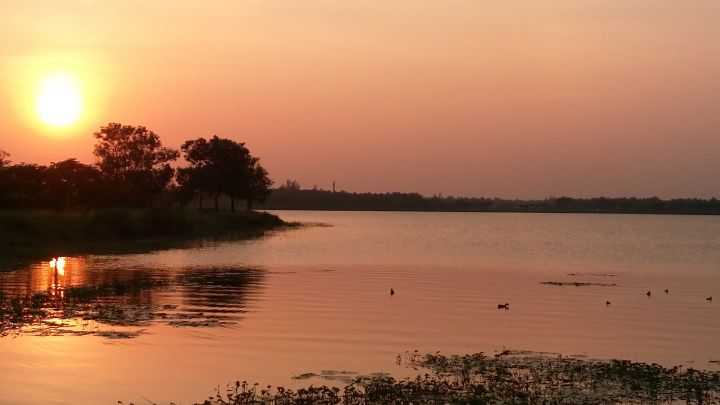
Kunduvada Kere is a popular destination of the city which serves as a major picnic spot. Located near the Kundvada Village on NH-4 Bypass road, the place is best known for its mesmerizing views of sunrise and sunset.
Another major feature of the area is the tank spread across the area of 253 acres is an importance source of drinking water of the city as well as for storing water in summer season.
2.Bagali(ಬಾಗಲಿ )
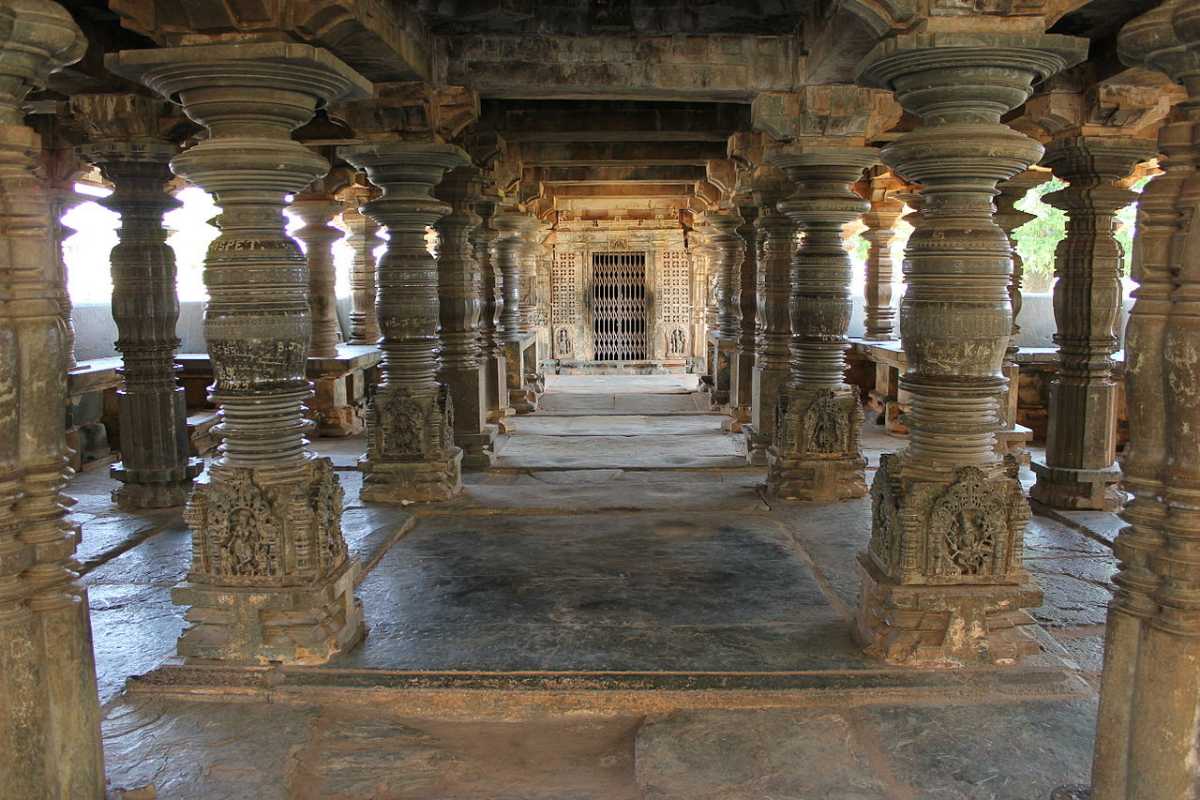
Bagali, famous for the ancient Kalleshwara Temple of 9th century is situated in the proximity to Harpanahalli. Showcasing the Chalukyan period architectural style, the temple complex houses carved statue of Lord Ugra Narasimha. The outer walls are featured with beautiful sculptures and carvings. One can also witness many Panchalinga temples lying in the vicinity of the main temple.
3.Sri Anjaneya Swamy Temple
(ಶ್ರೀ ಆಂಜನೇಯ ಸ್ವಾಮಿ ದೇವಸ್ಥಾನ )
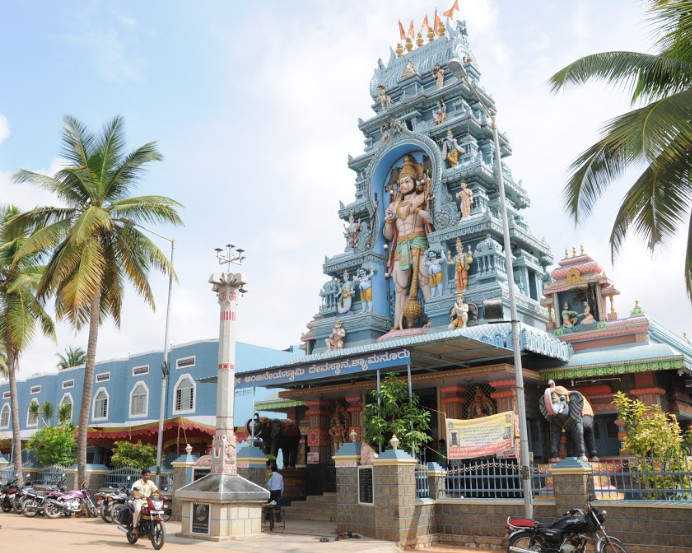
Sri Anjaneya Swamy Temple is an ancient temple dedicated to Lord Hanuman is believed to be established around 800 years ago, the estimated time of origin of Shamanur Village.
Situated in the same village nearly 5 kms away from the city, this temple was recently reconstructed in year 2000 with a Dravidian style of architecture at the same spot of the original shrine. Due to its religious significance, the temple is flocked with devotees in large number especially on Saturdays, the day of special puja. A three day festival called Rathothsav is also celebrated annually by the villagers and temple authorities commencing from the tenth day of Maha Shivratri.
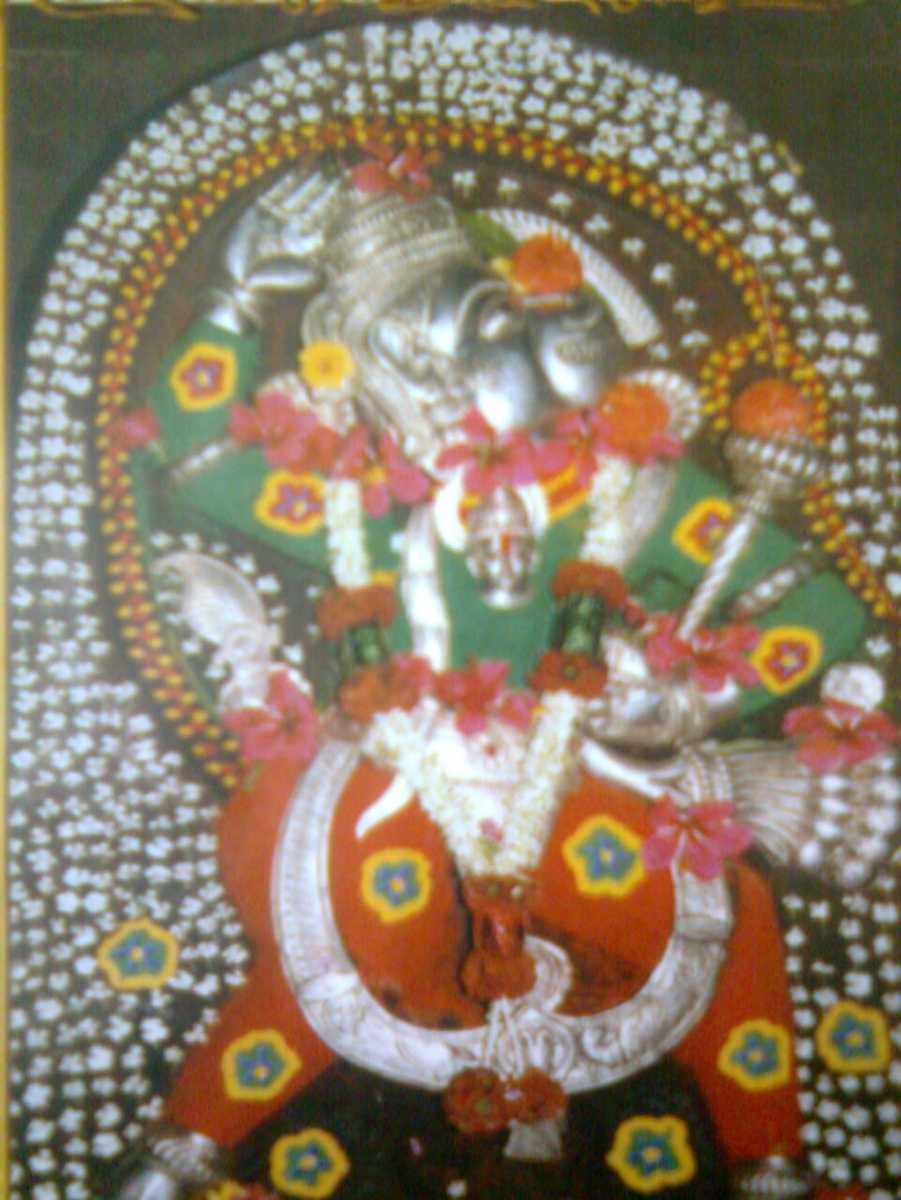
4.Karanji Mantapa (ಕಾರಂಜಿ ಮಂಟಪ )
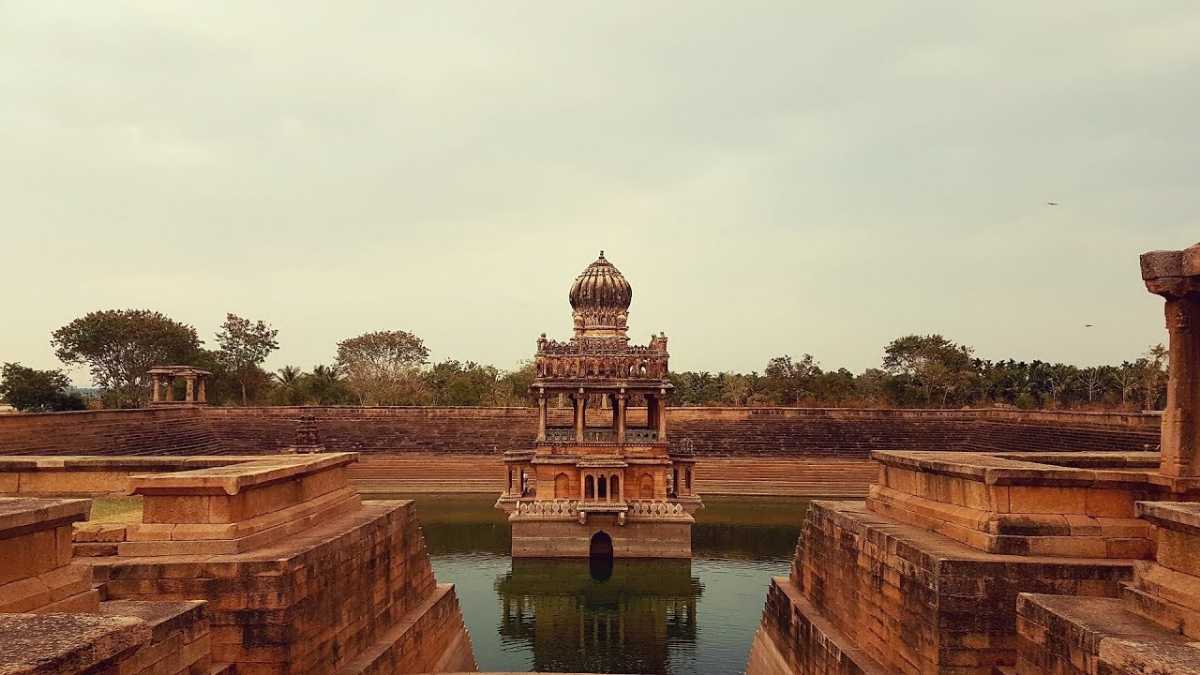
Karanji Mantapa is another historic place in the city that offers its tourists the antiquity of its glorious past. Featuring a tank of Santhebennur adorned with beautiful stone carved chariot in its middle, the place is almost 36 km from the city.
Pushkarani is another major attraction of the city showcasing the Kushmnada style of architecture. Built using the slab of red stones, it is said to be existing since 16th century and comprises of six mantapas and 52 steps to main entrance.
5.Bathi Gudda(ಬಾತಿಗುಡ್ಡ)
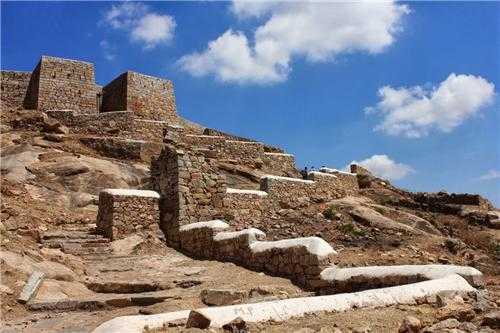
Located about 5km from Davanagere, this place is a sight of beauty and tranquility. It is a mountainous peak offering a spell binding sight of Harihar and the cities of Davanagere.
Apart from it, you will also find an ancient temple and a Dargah of Chaman Shah Wali on the peak. These tow holy shrines surrounded by endless flora are flocked by devotees in large number especially during annual festivities. The hill also houses large variety of flora, Bathi Lake and Bhadra Sugar factory. Fondly referred to as Pavithra Vana, Davanagere Dairy is also situated here which supplies milk to the district.
6.Sulekere(shanti sagara) (ಸೂಳೆಕೆರೆ )
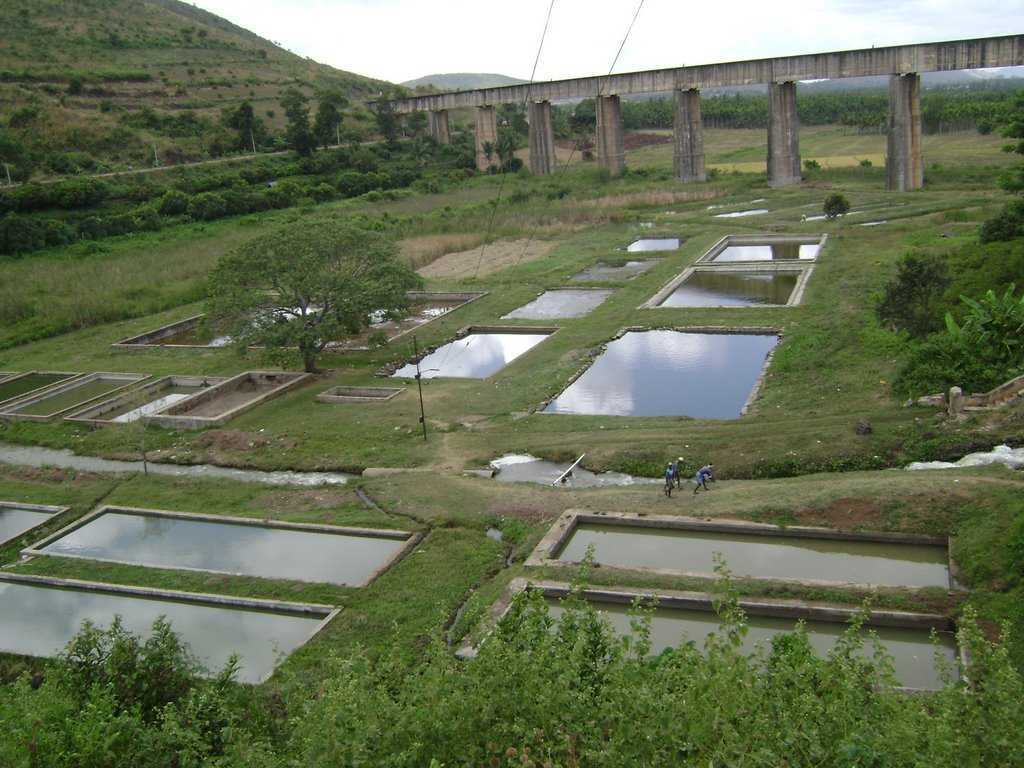
Also referred to as Soole Kere or Shanthi Sagara, this place is a famous tourist attraction and a main source of water supply. The pond, said to be created during 12th century by Princess Shanthi is a second largest pond in Asia.
Apart from being a significant source for drinking and agriculture, the place is also a perfect picnic spot. A temple devoted to Lord Siddeshwara located in the proximity attracts lots of devotees throughout the year. A great channel designed by Sir M Visvesvaraya also attracts a large crowd.


ANEKONDA (ಅನೆಕೊಂಡ)

Anekonda is a place for the history lovers as the place once served as the place where the elephants of the army were tied up. As per the story goes, it was when Betur was the capital.
The place was a big city back during 11th and 12th century and was also the seat of power for many kingdoms including Chalukyas, Pandyas, Gandas, Uchangi and Hoysalas.
8.Eshwara Temple (ಈಶ್ವರ ದೇವಸ್ಥಾನ)
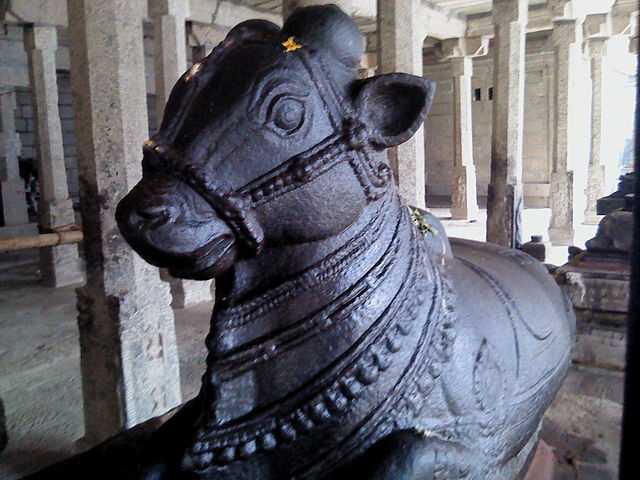
Another temple of great historic significance, Eshwara Temple is an example of amusing Hoysala style of architecture. Created with the help of mud and plaster, today the temple comprises of only two cells while the south cell collapsed in the past.
The temple houses idol of Gajalakshmi in the garbh griha and idol of Lord Shiva within the Sukhanasi doorway. You will also find the deities Lord Vishnu, Lord Ganesha, Lord Brahma and Lord Subramanya in the smaller shrines.
9.Bethur(ಬೆಥೂರ್)
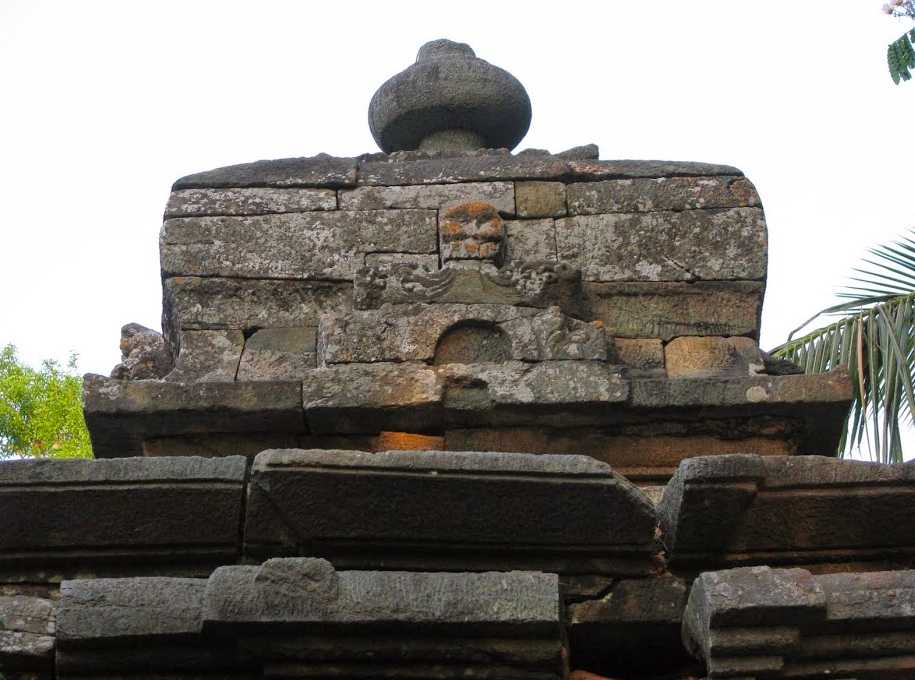
Betur is an ancient site with an essence of old world where one can witness the relics of Chalukyan style of architecture. Situated 6km from Davanagere on Davanagere-Jaglur road, it is believed that during the medieval period capital of Tribhuvana Malla Pandya was present at the exactly same site.
You will also find an ancient temple there basking in the glory of past with its victory pillars and various manuscripts preserving the important events. Dedicated to Lord Shiva and Goddess Parvati, one will also witness the idols of Natraja and Nandi
Harihareshwara Temple
(ಹರಿಹರೇಶ್ವರ ದೇವಸ್ಥಾನ )

Harihara I, also called Hakka and Vira Harihara I, was the founder of the Vijayanagara empire, which he ruled from 1336 to 1356 CE .He and his successors formed the Sangama dynasty, the first of four dynasties to rule the empire. He was Bhavana Sangama's eldest son.[citation needed] Harihara I and Bukka Raya I, the founders of great Vijayanagara Empire were the nephews of prince Kumara Rama. The mother of these two brothers was Maravve Nayakiti the elder sister of prince Kumara Rama.
The early life of Hakka and his brother Bukka is relatively unknown and most accounts are based on various theories. Ballappa Dandanayaka, a nephew of the Hoysala emperor Veera Ballala III, had married a daughter of Harihara.[3] This shows that Harihara was associated with the Hoysala Court. Immediately after coming to power, he built a fort at Barkuru, on the west coast of present-day Karnataka. It appears from inscriptions that he was administering the northern parts of present-day Karnataka from his seat at Gooty (Gutti), Ananthpur district in 1339. He initially controlled the northern portions of the Hoysala Empire before taking full control over its entire range after the death of Hoysala Veera Ballala III in 1343. Kannada inscriptions of his time call him Karnataka Vidya Vilas ("master of great knowledge and skills"), Bhashege tappuva rayara ganda ("punisher of those feudatories who don't keep their promise"), and Arirayavibhada ("fire to enemy kings"). Among his brothers, Kampana governed the Nellur region, Muddppa administered the Mulabagalu region, Marappa oversaw Chandragutti and Bukka Raya was his second in command.
His initial military exploits established his control over the valley of Tungabhadra River, and gradually he expanded his control to certain regions of Konkan and Malabar Coast. By that time, the Hoysala ruler Veera Ballala III had died fighting the Sultan of Madurai, and the vacuum thus created allowed Harihara to emerge as a sovereign power with all the Hoysala territories under his rule.
An inscription dated 1346 regarding a grant to the Sringeri matha describes Harihara I as the ruler of "whole country between the eastern and the western seas" and describes Vidya Nagara (that is, the city of learning) as his capital.
Harihara I was succeeded by his brother Bukka I who emerged as the most distinguished amongst the five rulers (Panchasangamas) of the Sangama dynasty.
Harihara I, also called Hakka andHarihara I, also called Hakka and Vira Harihara I, was the founder of the Vijayanagara empire, which he ruled from 1336 to 1356 CE[1] He and his successors formed the Sangama dynasty, the first of four dynasties to rule the empire. He was Bhavana Sangama's eldest son.[citation needed] Harihara I and Bukka Raya I, the founders of great Vijayanagara Empire were the nephews of prince Kumara Rama. The mother of these two brothers was Maravve Nayakiti the elder sister of prince Kumara Rama.[2]
The early life of Hakka and his brother Bukka is relatively unknown and most accounts are based on various theories. Ballappa Dandanayaka, a nephew of the Hoysala emperor Veera Ballala III, had married a daughter of Harihara.[3] This shows that Harihara was associated with the Hoysala Court. Immediately after coming to power, he built a fort at Barkuru, on the west coast of present-day Karnataka. It appears from inscriptions that he was administering the northern parts of present-day Karnataka from his seat at Gooty (Gutti), Ananthpur district in 1339. He initially controlled the northern portions of the Hoysala Empire before taking full control over its entire range after the death of Hoysala Veera Ballala III in 1343. Kannada inscriptions of his time call him Karnataka Vidya Vilas ("master of great knowledge and skills"), Bhashege tappuva rayara ganda ("punisher of those feudatories who don't keep their promise"), and Arirayavibhada ("fire to enemy kings"). Among his brothers, Kampana governed the Nellur region, Muddppa administered the Mulabagalu region, Marappa oversaw Chandragutti and Bukka Raya was his second in command.
His initial military exploits established his control over the valley of Tungabhadra River, and gradually he expanded his control to certain regions of Konkan and Malabar Coast. By that time, the Hoysala ruler Veera Ballala III had died fighting the Sultan of Madurai, and the vacuum thus created allowed Harihara to emerge as a sovereign power with all the Hoysala territories under his rule.
An inscription dated 1346 regarding a grant to the Sringeri matha describes Harihara I as the ruler of "whole country between the eastern and the western seas" and describes Vidya Nagara (that is, the city of learning) as his capital.
Harihara I was succeeded by his brother Bukka I who emerged as the most distinguished amongst the five rulers (Panchasangamas) of the Sangama dynasty.

Comments
Post a Comment